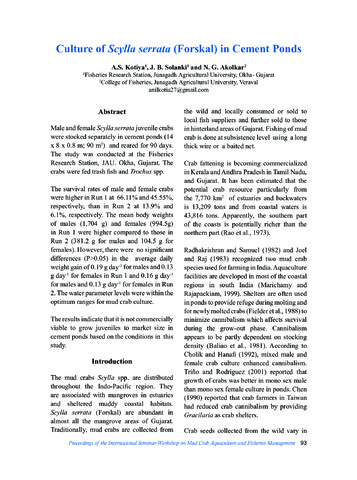Culture of Scylla serrata (Forskal) in cement ponds
Share
Abstract
Male and female Scylla serrata juvenile crabs were stocked separately in cement ponds (14 x 8 x 0.8 m; 90 m3) and reared for 90 days. The study was conducted at the Fisheries Research Station, JAU. Okha, Gujarat. The crabs were fed trash fish and Trochus spp.The survival rates of male and female crabs were higher in Run 1 at 66.11% and 45.55%, respectively, than in Run 2 at 13.9% and 6.1%, respectively. The mean body weights of males (1,704 g) and females (994.5g) in Run 1 were higher compared to those in Run 2 (381.2 g for males and 104.5 g for females). However, there were no significant differences (P>0.05) in the average daily weight gain of 0.19 g day-1 for males and 0.13 g day-1 for females in Run 1 and 0.16 g day-1 for males and 0.13 g day-1 for females in Run 2. The water parameter levels were within the optimum ranges for mud crab culture.The results indicate that it is not commercially viable to grow juveniles to market size in cement ponds based on the conditions in this study.
Suggested Citation
Kotiya, A. S., Solanki, J. B., & Akolkar, N. G. (2015). Culture of Scylla serrata (Forskal) in cement ponds. In E. T. Quinitio, F. D. Parado-Estepa, Y. C. Thampi Sam Raj, & A. Mandal (Eds.), Proceedings of the International Seminar-Workshop on Mud Crab Aquaculture and Fisheries Management, 10-12 April 2013, Tamil Nadu, India (pp. 93-99). Tamil Nadu, India: Rajiv Gandhi Centre for Aquaculture (MPEDA).


